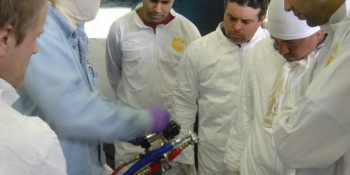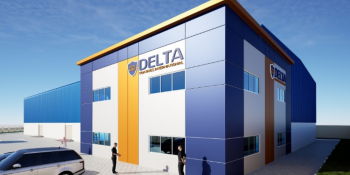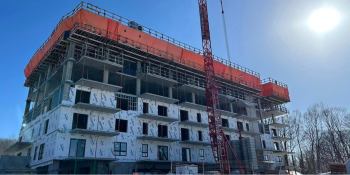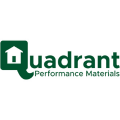Q&A Forums
Un-Vented Attic Insulation Post New Topic | Post Reply
| Author | Comments |
|---|---|
|
Posted: Feb 05, 2008 02:11 PM
|
Un-Vented Attic Insulation
Once again for clarifacation. Have a quotation opportunity, existing home very favorable pitch.The letter of the code, ccSPF to the roof deck, 'OK' vapor barrier. Do not spray ccSPF on the ceiling, vapor barrier on ceiling not allowed, 'OK'. what do I do with the 12" of blown-in insulation. Permissable to leave in place, will it be an improvement or deterient? Buddaro |
|
mason
Posted: Feb 05, 2008 02:47 PM
|
I'm not sure what you are asking. Please be a little more clear. The ICC codes allow the use of insulation installed to the underside of the roof deck in unvented attic and cathedral ceiling situations. The 2007 ICC supplement introduces 3 vapor retarder classes. ccSPF would qualify as a class II vapor retarder at thickness of 2 inches or more. The code allows a class II vapor retarder in all climate zones and unvented attics with an air impermeable insulation. Low density foam would be classified as a class III vapor retarder at 5.5 inches and is allowed in warm and mixed climates without an additional vapor retarder element. Hope that helps. |
|
Posted: Feb 06, 2008 10:08 AM
|
To clarify. On an existing 1 1/2 story home. All the drywall and insulation is being removed on the first level and will be re-insulated with ccSPF. The owner wants the vents closed and the roof deck insulated with ccSPF. For the second level (cost savings) the owner has inquired ' can the existing drywall on the walls and ceilings be left in place', with the exception of the wall sections that adjoin the existing roof rafters that will need to be spray foamed? My question is; can I leave the existing insulation in place or does it have to be removed? |
|
mason
Posted: Feb 06, 2008 04:06 PM
|
You do not want to leave fiberglass in the ceiling in an unvented situation. The fiberglass needs to have the air circulating around it to dry out condensation. |
|
Posted: Feb 06, 2008 07:28 PM
|
Thanks, for the direction. I hope this clairfies a gray area for the other applicators. |
|
Rob Granger
Posted: Feb 06, 2008 07:52 PM
|
Mason, I do not quite understand the 2007 ICC supplement as it pertains to the air imperable section. What comprises a mixed climate.Could you explain the supplement differently. Thanks. |
|
mason
Posted: Feb 07, 2008 07:43 AM
|
A mixed climate is a climate zone where there are approximtately equal number of heating and cooling days. Examples of mixed climates are Virginia, North Carolina, Tennesee, Kentucky, etc. In these zones, a vapor drive is likely to go in both directions depending on the time of day and season. It is suitable in these climates to use materials that have higher permeance than in colder climates (presuming you can stop the air infiltration). In the 2007 ICC supplement the class I vapor retarders haved a permeance of less than 0.1 perms. Class II is between 0.1 and 1.0 Class III is between 1.0 to 10 perms |
|
Rob Granger
Posted: Feb 08, 2008 07:23 AM
|
Mason, does the supplement say that those of us in NY cannot spray OC to the roof deck because it has air imperable. |
|
mason
Posted: Feb 09, 2008 11:48 AM
|
I am not sure which codes New York endorse. If they use the 2006 code, it would allow the use of air impermeable insulation to the underside of roof decks in unvented attics and cathedral ceilings and would require a permeance of 1 or less as a vapor retarder. The 2007 Supplement introduces the 3 classes of vapor retarders. But if New York uses the 2003 code, that does not allow unvented attics. Check with the state to make sure, but I believe they use the 2006 code. |





























